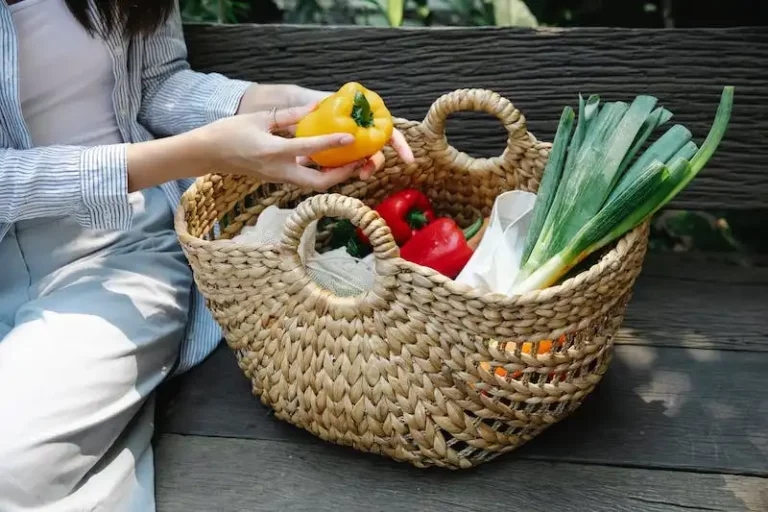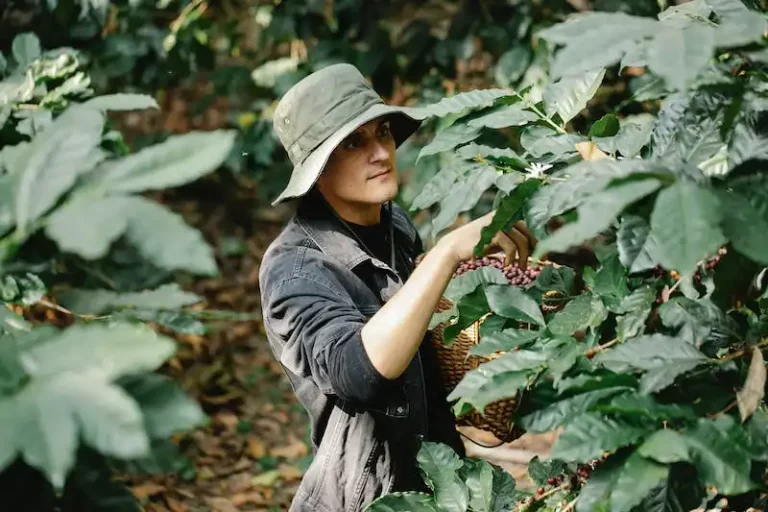When it comes to caring for our indoor plants, providing them with a suitable potting soil is vital for their overall health and happiness. Many different types of plants have different preferences when it comes to the soil they grow in, but fear not – there is a no-nonsense universal potting soil recipe that works for most indoor plants.
This article will focus on a soil recipe that is versatile and can be used for a wide range of plants, from foliage plants to cactus. Ultimately, the goal is to create a loose and well-draining soil that provides the necessary nutrients for your plants to thrive.
The ingredients for this universal potting soil recipe are easy to find and can be modified slightly to suit your plants’ needs. Here’s what you’ll need:
– 10L of a soil-less mix like Seramis
– Some perlite or vermiculite for added drainage
– A handful of carbon-rich material like rotted manure
– A mix of fertilizers to improve the nutrient content
By using a soil-less mix like Seramis as the base, you ensure that the soil will be loose and well-draining. This is particularly important for plants that prefer a dry environment, such as cacti. Adding perlite or vermiculite to the mix further improves its draining capabilities.
The carbon-rich material, like rotted manure, helps to improve the soil’s nutrient content. This, combined with the mix of fertilizers, ensures that your plants will have access to the nutrients they need to grow and thrive. It’s important to note that the amount and type of fertilizers you use may vary depending on the specific needs of your plants.
So, if you’re looking for a no-nonsense universal potting soil recipe for your indoor plants, look no further. Give this recipe a try, and you’ll see your plants flourish and show their happiness in no time. Your indoor garden will be the envy of all who lay eyes on it!
What Is The Best Soil for Indoor Plants How Do You Choose It
Choosing the right soil for your indoor plants is crucial for their overall growth and health. The soil you choose should provide the necessary nutrients and drainage that your plants need to thrive. There are several factors to consider when selecting the best soil for your indoor plants.
Firstly, it is important to understand the specific requirements of your plants. Some plants, like succulents, prefer well-draining soil, while others, like ferns, require a more moisture-retentive soil. Understanding the needs of your plants will help you choose the appropriate soil.
One option is to go for a soil-less mix. Soil-less mixes are made up of ingredients like coir, perlite, and vermiculite, and provide a lightweight and well-draining medium for your plants. These mixes are commonly found in horticultural stores and can be a great choice for indoor plants.
Another option is to use a pre-packaged universal potting soil. Brands like Westland and Wilko offer multipurpose potting soils that are suitable for a wide range of houseplants. These soils are usually enriched with organic fertilizers, providing your plants with the essential nutrients they need to thrive.
If you prefer to make your own potting soil, you can blend equal parts of topsoil, compost, and sand to create a well-balanced mixture. This homemade mixture allows for good drainage and root development. Just make sure to sterilize the soil before using it to prevent any unwanted pests or diseases.
When choosing the best soil for your indoor plants, keep in mind that the texture should be loose and crumbly, ensuring proper airflow and preventing waterlogged conditions. Additionally, the soil should be rich in organic matter, which promotes healthy plant growth.
Remember to always follow the directions provided by the soil manufacturer, as different brands may have specific recommendations for their products. Also, consider the size of your pots or containers, as smaller plants may require a smaller volume of soil.
In conclusion, there are various options for the best soil for indoor plants. Whether you choose a soil-less mix, a pre-packaged potting soil, or make your own, the key is to provide a well-draining and nutrient-rich environment for your plants to thrive. Consider the specific needs of your plants, and choose the soil that best suits those requirements. With the right soil, your indoor plants will be on their way to healthy growth and vibrant green foliage!
This Article Contains
This article contains a no-nonsense universal potting soil recipe for indoor plants. If you’re a plant lover like me, you must know the importance of having good quality soil for your plants. Whether you’re growing orchids, succulents, or any other types of plants, having the right potting soil is a must.
So, what makes the best potting soil? Well, there are a few key ingredients that are required to create a premium potting mix. First and foremost, good-quality soil is a must. I recommend using a high-quality, natural soil such as Westland Garden Health Potting Mix. This soil is modified to suit a wide range of plants and helps in providing the essential nutrients they need.
Another essential ingredient is coco coir. This is a natural fiber that helps in retaining moisture and providing good drainage for the plants. It also helps in preventing overwatering, which is particularly important for orchids and succulents.
Moreover, adding perlite to the potting mix can also be beneficial. Perlite is a lightweight volcanic rock that helps in improving drainage and aeration in the soil. It also helps in retaining moisture, which is crucial for the healthy growth of plants.
In addition to these ingredients, I highly recommend adding biochar to your potting soil. Biochar is a type of charcoal that helps in improving soil fertility and water retention. It also helps in reducing acidity in the soil, which is especially important for orchids and other acid-loving plants.
When mixing your potting soil, the ratio I recommend is 6 parts soil, 3 parts coco coir, 1 part perlite, and a small amount of biochar. This mixture provides an ideal balance of nutrients, drainage, and moisture retention.
Finally, it’s important to keep in mind that different plants have different requirements. So, if you’re planting orchids, for example, you may need to adjust the ingredients accordingly. Orchids prefer a well-drained potting mix with a higher amount of coco coir and perlite.
In conclusion, using a universal potting soil recipe is a great option for most indoor plants. Whether you’re a beginner or an experienced gardener, having a good-quality soil-less potting mix can make a big difference in the health and happiness of your plants.
Remember, the key to a successful potting soil mix is to use the right ingredients in the right proportions. So, go ahead and give it a try! Your plants will thank you for it.
How to Choose the Best Soil for Indoor Plants
When it comes to indoor plants, choosing the right soil is crucial for their overall health and growth. The soil you use can greatly affect the success of your plants, so it is important to select an appropriate option to ensure their vitality.
One popular choice is a no-nonsense universal potting soil recipe that is easy to make at home. This recipe contains a mixture of ingredients that provide the necessary nutrients and drainage for your plants to thrive.
To make this potting soil, you will need a 40l bag of soil-less potting mix as the base. This is readily available at most garden centers and is an excellent starting point for creating your soil mix.
In addition to the 40l bag of soil-less potting mix, you will need to add perlite, which helps with drainage, and thick sand to improve water retention. These ingredients can be found at your local garden center or online.
When choosing your soil, it is essential to avoid those that contain too much sand or clay, as they can inhibit drainage and suffocate the roots of your plants. Look for a well-draining soil mix that is specifically designed for indoor plants.
Another factor to consider is the horticultural content of the soil mix. Certain varieties of indoor plants, such as orchids and cacti, require specific soil mediums to thrive. Make sure to read the labels of your plant varieties and choose a soil mix that is appropriate for their needs.
One of the best options for indoor plants is a multipurpose potting mix that contains a balanced blend of organic compost, perlite, and horticultural sand. This will provide your plants with all the necessary nutrients and drainage they need for healthy growth.
When using this potting soil mix, it is vital to follow the directions provided on the packaging. This will ensure that you are using the mix correctly and giving your plants the best chance for success.
In addition to the soil mix, it is important to use appropriate fertilizers to further enhance the growth of your indoor plants. Organic options are usually the best choice, as they are safe for the environment and provide a slow-release of nutrients.
If you prefer not to make your own soil mix, there are many commercially available options that work well for indoor plants. Some popular brands include Wilko and Gold Label, which offer a wide range of soil mixes suitable for different types of plants.
Remember that the health of your indoor plants depends on the quality of the soil they are planted in. Choosing the right soil mix can make a significant difference in their growth and overall well-being. Take the time to find the best soil for your indoor plants, and you will be rewarded with beautiful and thriving houseplants.
A Based on Indoor Plant Requirements
When it comes to potting indoor plants, it’s important to consider their specific needs. A good potting soil mix will provide the right balance of nutrients, water retention, and drainage to support healthy growth. Here’s a recipe that I’ve found works well for a variety of indoor plants:
- Pests:
- Topsoil:
- Specialised:
- Top:
- Helps:
- Directions:
- Problems:
- Cacti:
- Repotting:
- Soil:
- Only:
- Holds:
In this recipe, we’ll be using a mix of organic and purchased ingredients. Using a loose potting soil mixture will help avoid waterlogged conditions, which can be a problem for many houseplants. This mix also includes beneficial items such as worm castings, which are high in nutrients to support healthy plant growth.
Here’s how to make the potting soil mix:
- Choose a horticultural grade potting soil mix, preferably one that is loose and well-draining. A 40L bag should be sufficient for most indoor plants.
- For plants that prefer a more acidic pH, such as orchids, you can add in some sphagnum moss or coco coir.
- Round up the ingredients you’ll need:
- 40L horticultural grade potting soil mix
- 3 parts compost or worm castings
- 1 part perlite or vermiculite
Mix all of the ingredients together in a large container until well combined. You can use your hands or a garden trowel to mix everything thoroughly.
Once your potting soil mix is ready, it’s time to repot your indoor plants. Make sure to choose a container that has good drainage to prevent waterlogging. Use the potting soil mix to plant your indoor plants, making sure to gently firm the soil around the roots to provide stability.
I recommend keeping a close eye on your plants’ watering needs and adjusting accordingly. Different plants have different requirements, so it’s important to pay attention to how your plants respond to the potting soil mix.
So there you have it, my no-nonsense universal potting soil mix recipe for indoor plants. Give it a try and see how your plants thrive!




